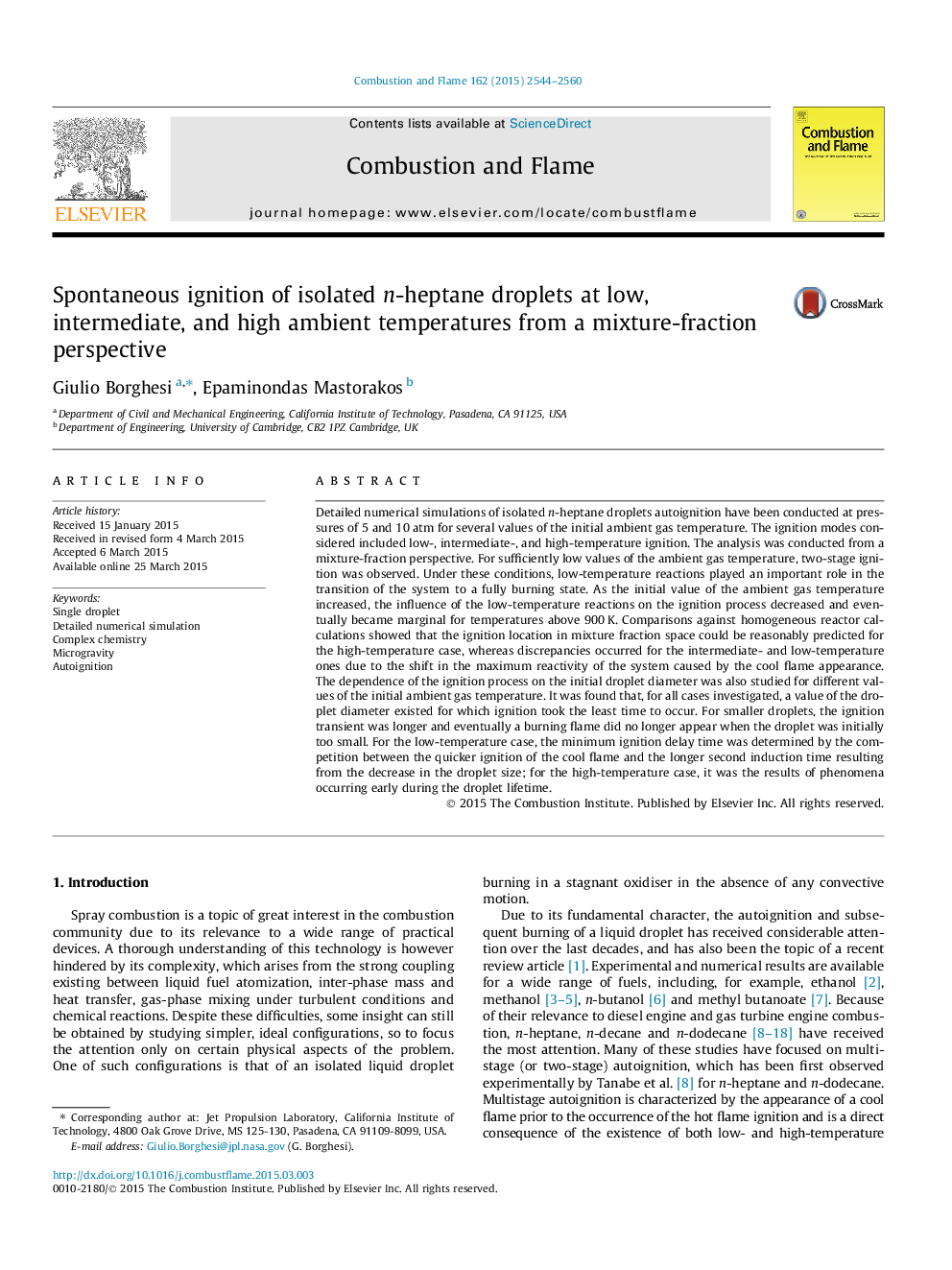| کد مقاله | کد نشریه | سال انتشار | مقاله انگلیسی | نسخه تمام متن |
|---|---|---|---|---|
| 166286 | 457751 | 2015 | 17 صفحه PDF | دانلود رایگان |

Detailed numerical simulations of isolated n -heptane droplets autoignition have been conducted at pressures of 5 and 10atm for several values of the initial ambient gas temperature. The ignition modes considered included low-, intermediate-, and high-temperature ignition. The analysis was conducted from a mixture-fraction perspective. For sufficiently low values of the ambient gas temperature, two-stage ignition was observed. Under these conditions, low-temperature reactions played an important role in the transition of the system to a fully burning state. As the initial value of the ambient gas temperature increased, the influence of the low-temperature reactions on the ignition process decreased and eventually became marginal for temperatures above 900K. Comparisons against homogeneous reactor calculations showed that the ignition location in mixture fraction space could be reasonably predicted for the high-temperature case, whereas discrepancies occurred for the intermediate- and low-temperature ones due to the shift in the maximum reactivity of the system caused by the cool flame appearance. The dependence of the ignition process on the initial droplet diameter was also studied for different values of the initial ambient gas temperature. It was found that, for all cases investigated, a value of the droplet diameter existed for which ignition took the least time to occur. For smaller droplets, the ignition transient was longer and eventually a burning flame did no longer appear when the droplet was initially too small. For the low-temperature case, the minimum ignition delay time was determined by the competition between the quicker ignition of the cool flame and the longer second induction time resulting from the decrease in the droplet size; for the high-temperature case, it was the results of phenomena occurring early during the droplet lifetime.
Journal: Combustion and Flame - Volume 162, Issue 6, June 2015, Pages 2544–2560